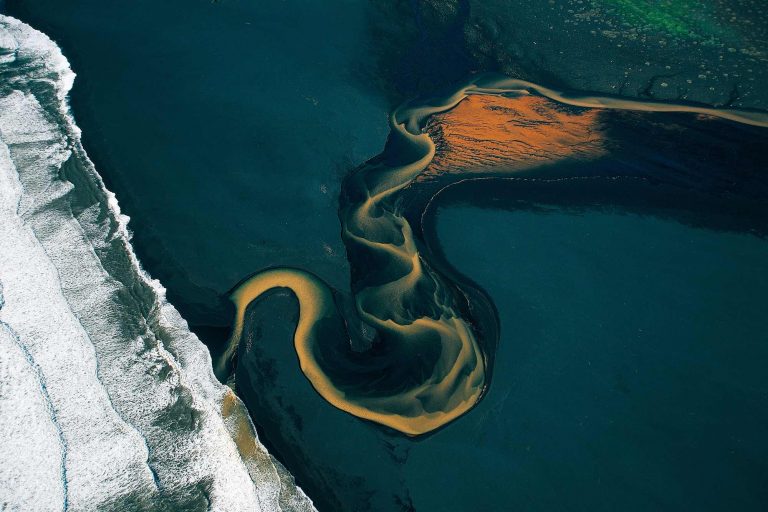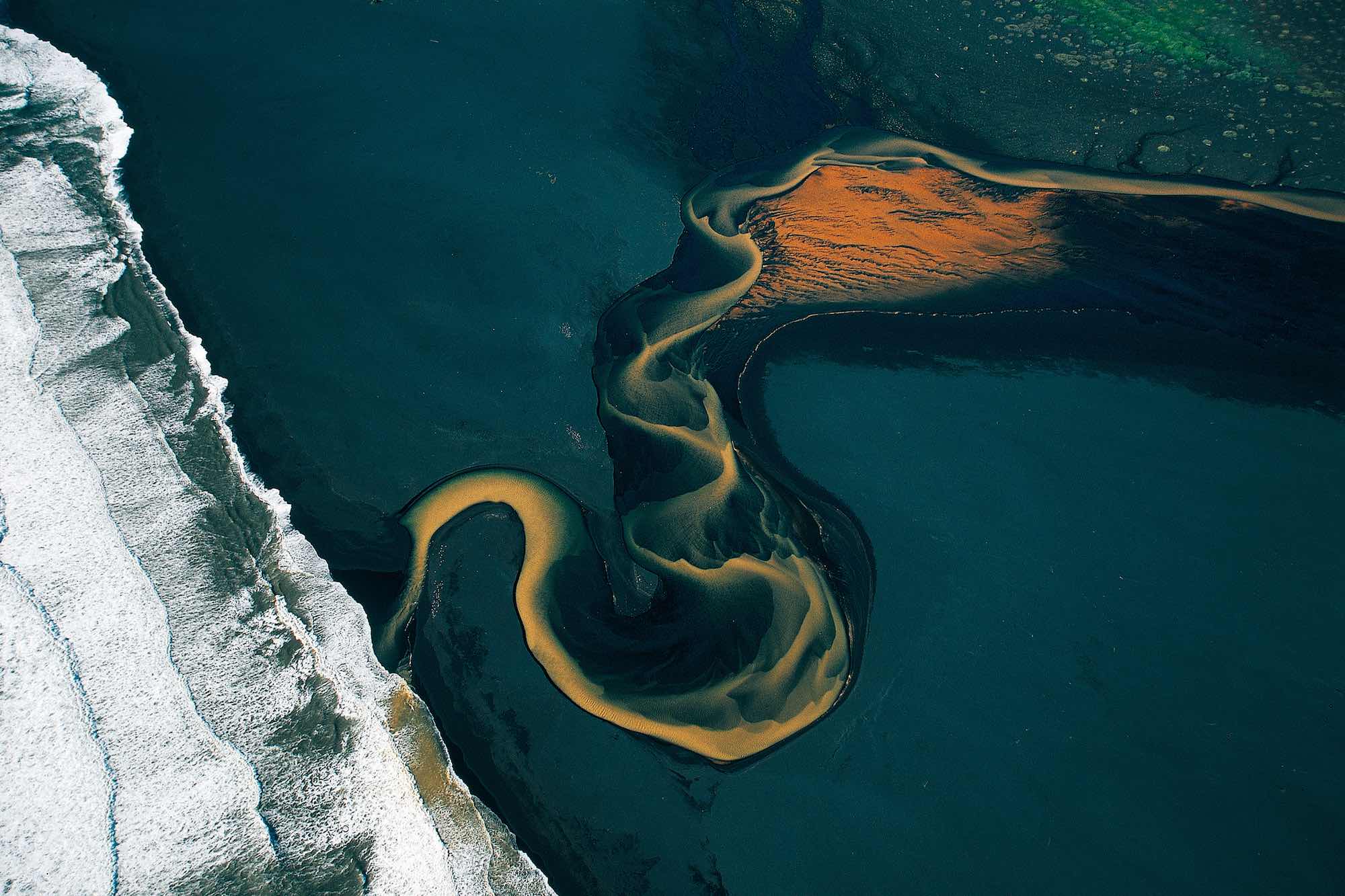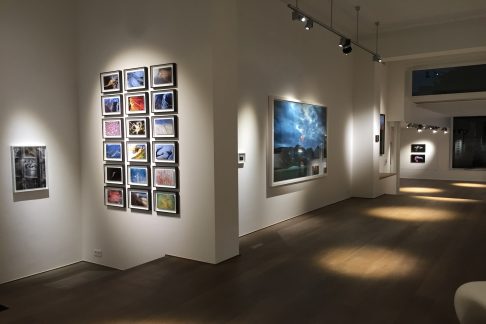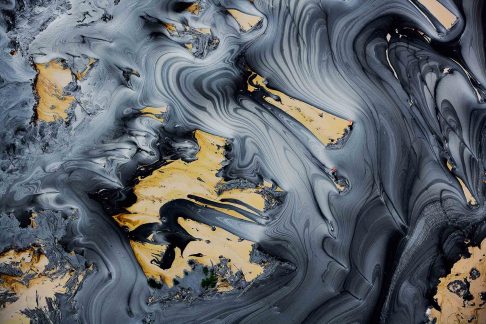Fed by the Myrdalsjökull, a 308-square-mile (800-square-kilometer) dome of ice in the southwest of the island, the Markarfljót River flows round the northern edge of the small Eyjafjallajökull Glacier, tracing a hesitant course over a broad bed of basaltic sediments before ending its journey on a beach of black sand on the Atlantic shore. Like all glacial rivers, the Markarfljót spreads out over a plain from which glaciers have receded, forming a dense, intricate network of channels. Its course changes constantly, and its flow reaches a peak in July and August, when the ice melts. Global warming could disrupt this seasonal cycle. The Vatnajökull ice cap is the country’s biggest glacier; with an area of 3,203 square miles (8,300 km2), it is as big as all continental Europe’s glaciers combined. Icelandic glaciologists have warned that the Vatnajökull has been receding at an average of approximately 3.25 feet (1 m) per year for some years, and that snow is replaced by rain at altitudes of less than 3,279 feet (1,000 m). If this trend continues, the glacier could disappear by 2100.
THE PHOTO
Taken in 1996, It is a silver photography. His original slide is stored by the Yann Arthus-Bertrand Studio in Paris.
THE PRINT
Original work by Yann Arthus-Bertrand. The prints are made exclusively by the Yann Arthus-Bertrand Studio in Paris under the control of the artist himself.
Original Edition Signed and Numbered
Prints ordered without frames include a white border
- Format 1, 2 & 3 = 2 cm of white border around the image
- Format 4, 5 = 4 cm of white border around the image
- Format 6 = 5 cm of white border around the image
Digital print made by the Yann Arthus-Bertrand Studio. Canon IPF 9400 Ink-jet printer, pigmentary ink, printing on acid free 100% cotton fibre paper (Museo Silver Rag)
>> voir des tirages dans l’Atelier YAB




